When it comes to tree removal, cutting corners by leaving behind the stump or trying to do it yourself can present more problems (and safety risks) than you bargained for.
While on the surface, a leftover tree stump might seem harmless, it’s more than just an eyesore. It’s a host of problems waiting to happen. Beneath your lawn, it can become a root cause of hidden risks like pest infestations, tripping hazards, and even rot and bacteria.
That’s why we at Good’s believe in no stump left behind.
Let’s delve into why you should remove the dead tree stump from your yard.
5 Reasons Tree Stumps Should Be Removed
How to Remove a Tree Stump
Common Questions About Stump Removal
Working With Good's Tree and Lawn Care for Stump Removal
5 Reasons Tree Stumps Should Be Removed in Pennsylvania
1) Insect Infestation
Pesky insects like termites and carpenter ants will be among the first to take up residence in the decaying wood of a rotten tree stump. 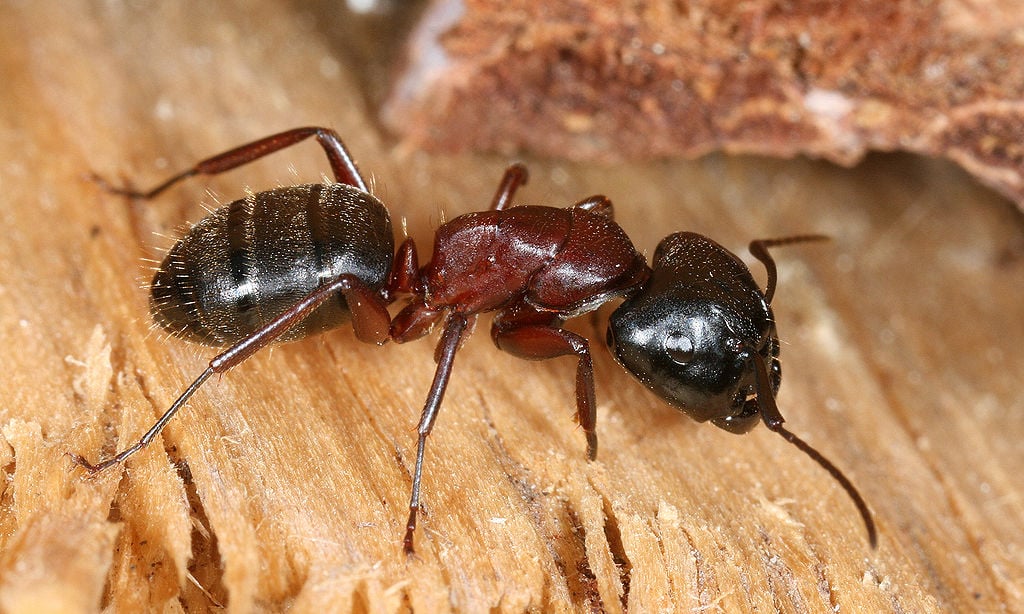
From there, there’s not much stopping them from deciding to level up and move into your home as well.
2) Rot & Decay
Fungi and bacteria below ground feed on the tree stump’s wood, causing it to decay. While this process is all part of nature’s circle of life, allowing these pathogens to flourish underground increases the chance that they could infect other nearby plants that are otherwise healthy.
For example, root-rotting fungus feeds on plants like shrubs, rhododendrons, and azaleas. By removing the wood and replacing it with soil, you can restore the balance of the ecosystem and allow your healthy plants to continue to thrive.
3) Safety Risks
Tree stumps and visible roots left in the yard create tripping hazards in your backyard, leading to sprained ankles or worse.
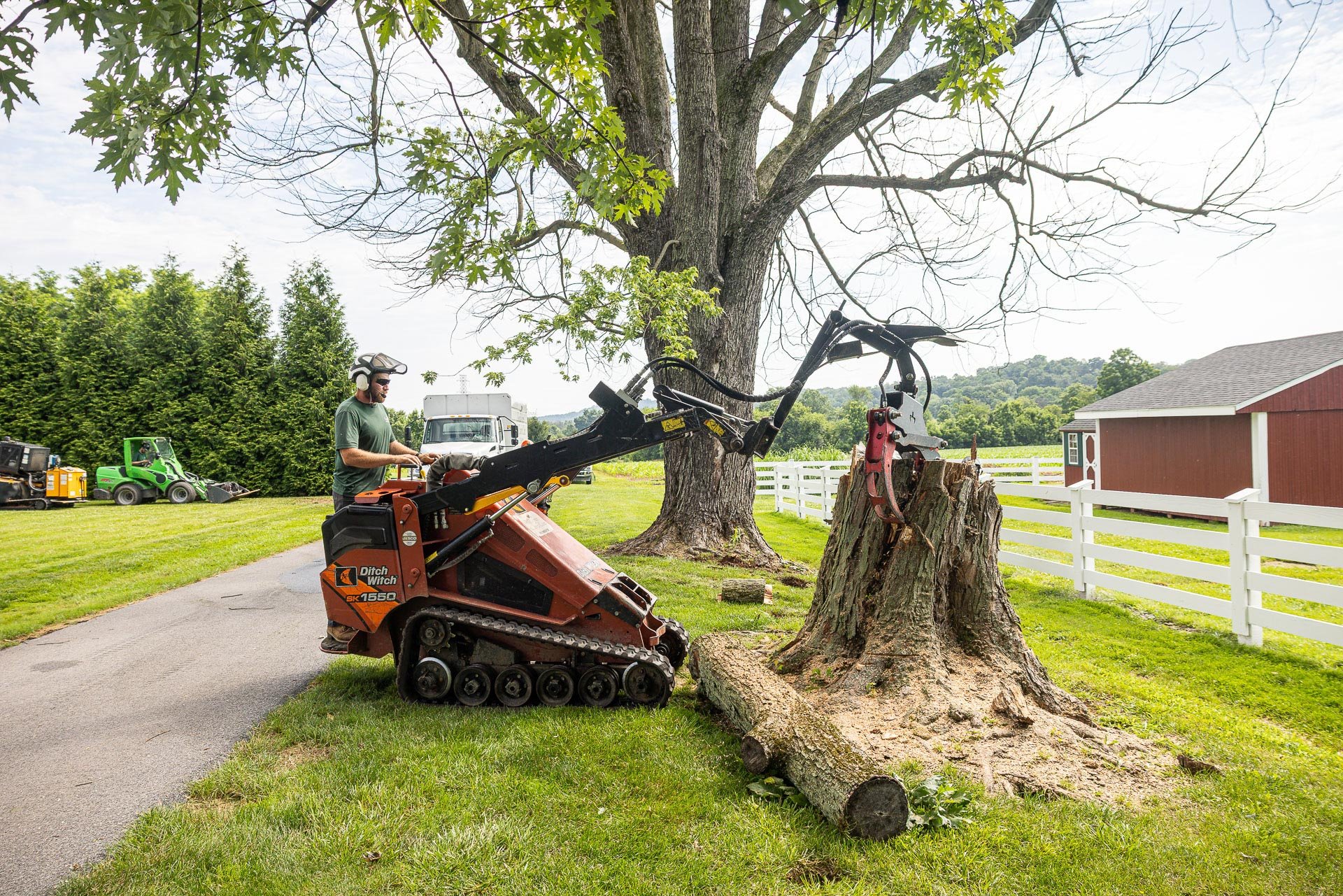 Stumps and roots also pose a problem for machines, namely mowers.
Stumps and roots also pose a problem for machines, namely mowers.
For instance, if a mower runs over a tree stump or exposed root, it can bend or dull the mower’s blade, cause dangerous kickback, or even break other components of the mower. All of these scenarios can put the person using the mower in harm’s way.
4) Decreased Curb Appeal
Perhaps one of the most visible reasons to remove a stump from your yard is the aesthetic one.
A rotting tree stump infested with termites will do nothing to bring up your home’s value. In fact, it will do just the opposite.
5) Local Regulations
If the reasons above aren’t enough for you, your city’s local laws just might convince you.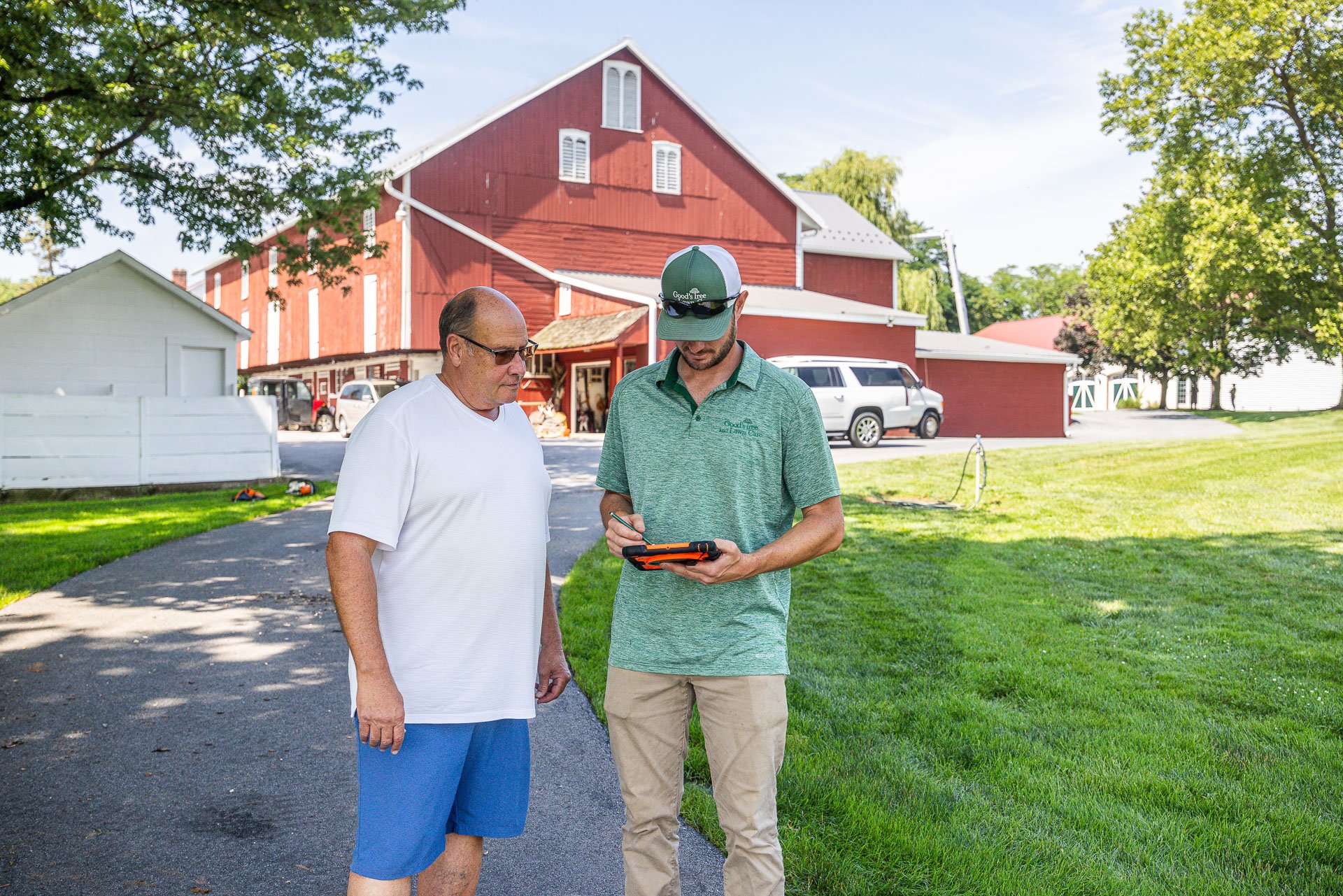
Especially if the tree is located near a sidewalk or a street, the local ordinances in your area may require you to remove a tree stump for safety reasons. A local tree expert can advise you on the regulations for communities throughout Lancaster, Harrisburg, Lebanon, and beyond.
How to Remove the Tree Stump From Your Yard
Now that you know why you should remove the tree stump from your lawn in South Central Pennsylvania, let’s dig into how it should be removed.
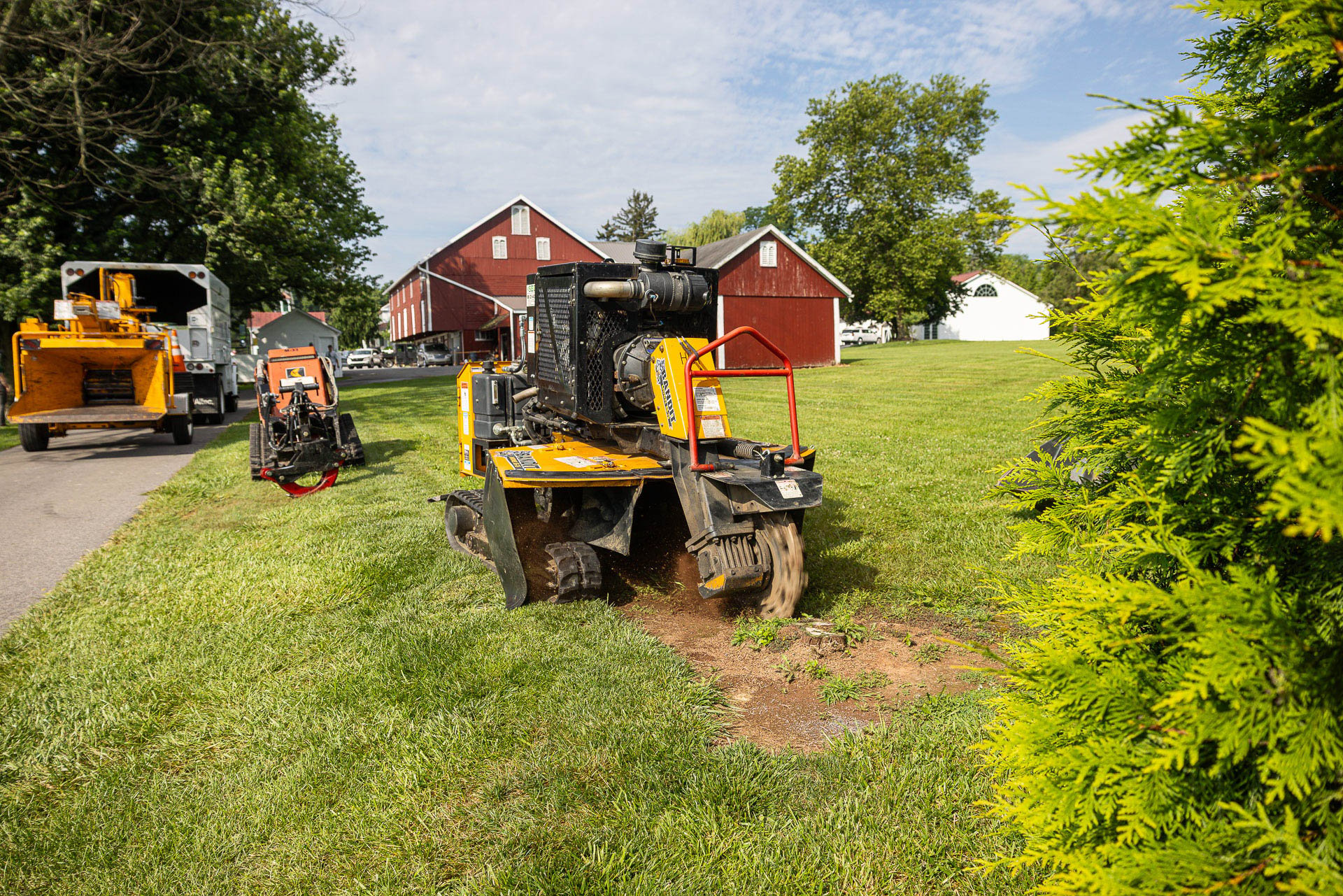
What is Tree Stump Grinding?
Tree stump grinding involves using a stump grinder to chip away at the stump until it is well below grade, meaning that it’s below the natural ground level.
In the process, the visible stump and any exposed roots are turned into mulch. How far below grade we grind the stump depends on your future plans for the area.
If your goal is to return an area to lawn after a tree is removed, the stump should be grinded to about 8-10 inches below ground level, while if your goal is to replace the tree someday, the stump should be grinded to a depth of at least 15 inches below grade, depending on the size of the stump being removed.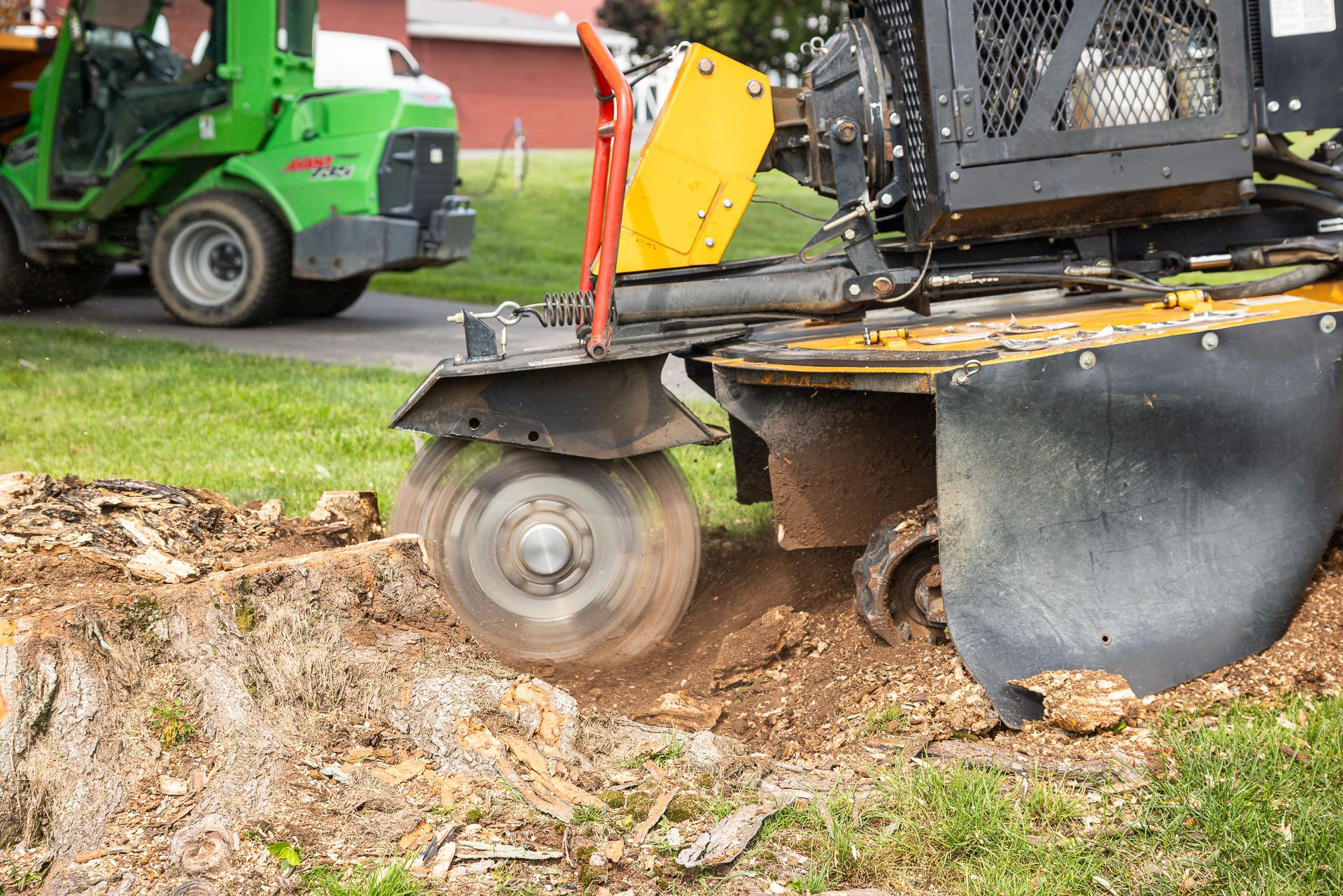
What are the Benefits of Stump Grinding?
More efficient and economical than tree stump removal, tree stump grinding offers numerous benefits.
Provides a Clean Below-Grade Finish
Unlike tree stump removal, which can require digging up an entire yard, stump grinding offers a clean, below ground finish without a mess left behind.
Plus, removing the tree stump and exposed roots eliminates potential tripping hazards.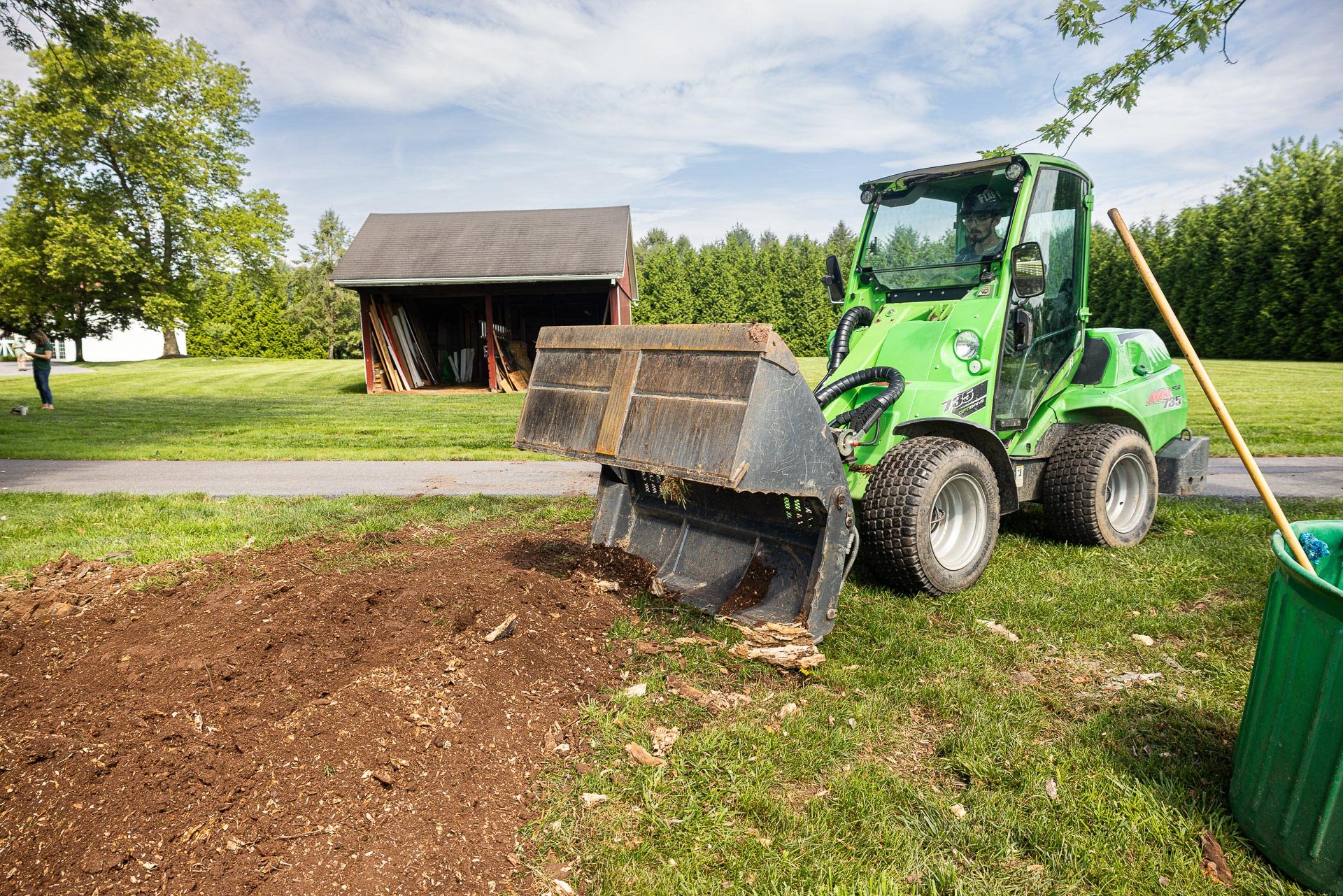
Offers the Opportunity to Relandscape an Area
Going hand in hand with the benefit of a clean, smooth finish, eliminating the stump makes it easier on you to relandscape an area.
Unlike with total tree stump removal, you don’t have to worry about backfilling in a huge hole or sunken spots due to the disturbance caused by removing the entire system.
This means you can plant new trees, redesign the look of the landscape, and plant grass without issue.
Involves an Easy and Efficient Process
Stump grinding ends up being a lot quicker and easier than trying to hack at the tree’s system with an axe, pulling with chains on a truck bumper, or even enlisting the muscle of heavy machinery to excavate the entire yard.
Just remember that even though it’s an easier process overall than some of the other options, you should still call in professional arborists who have the equipment and training required to get the job done correctly.
Mitigates the Chance of Regrowth
By removing the tree stump and visible roots, you cut off the tree’s last chance at a comeback, reducing the chance of a surprise resprouting (and having to take down an unwanted tree all over again).
Depending on the species of tree, an herbicide application may also be necessary to completely eliminate any chance of regrowth from any remaining sub-grade roots.
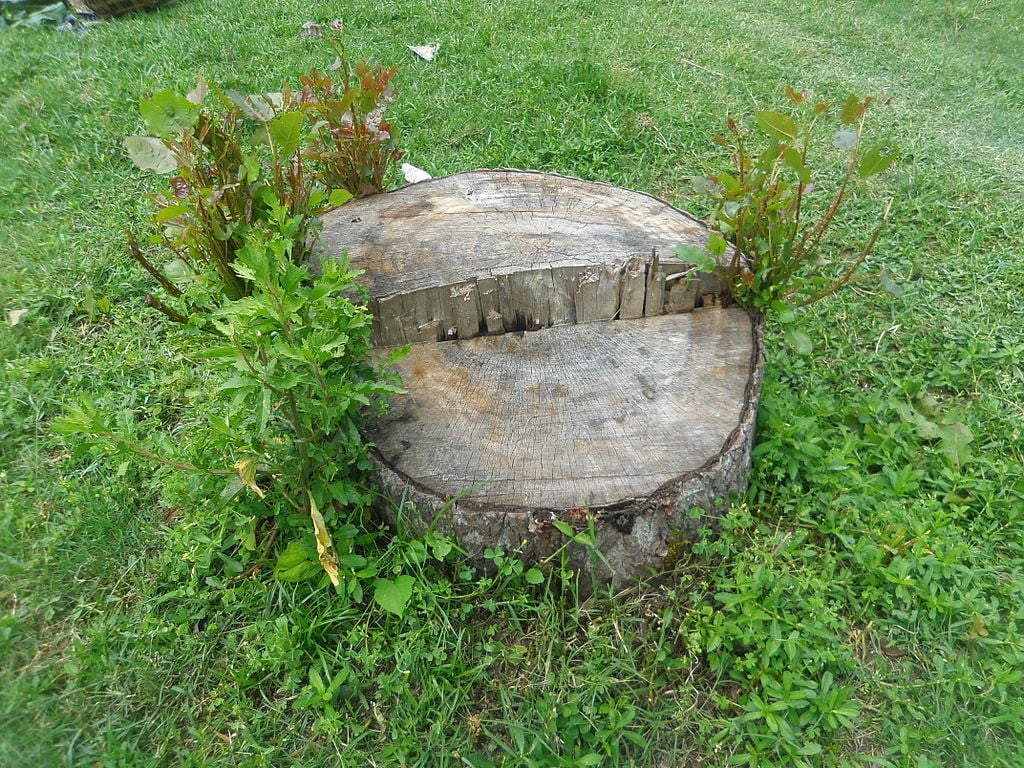
Minimizes Safety Risks
Stump grinding inherently comes with fewer risks than trying to remove a tree’s entire root network.
Just be sure to rely on a company that employs trained and certified professionals who know what they’re doing and who have the right equipment to handle the job at hand.
Common Questions About Stump Removal
What are my options for removing a tree stump?
Stump grinding with a commercial-grade stump grinder is the standard method for removing large stumps in a developed landscape.
Besides the depth of grinding, factors that impact the cost of service include:
- Extent of any surface roots
- Whether the resulting stump debris needs to be hauled away (some people like to use them for composting purposes)
- Whether the area needs to be regraded with topsoil and grass seed.
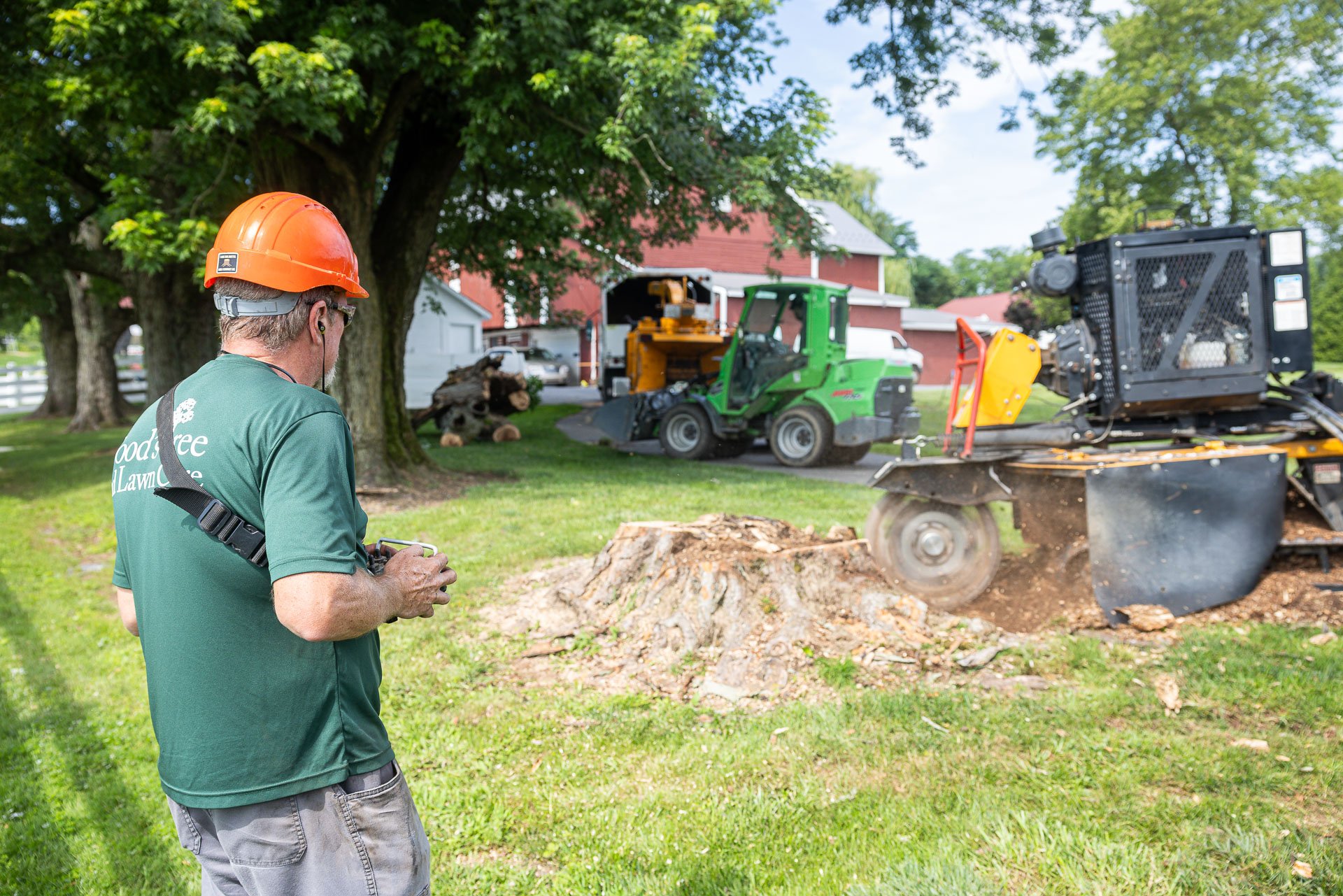
So, depending on these factors, the price can range from $200 for a small stump removal to thousands of dollars for jobs with large and/or multiple stumps that require cleanup and regrading.
Does tree removal include stump removal?
Not every company will include stump removal in their estimates - make sure you check with your chosen provider prior to accepting the proposal. Stump grinding will show up as a separate itemized value on your tree removal proposal from Good’s.
What happens if I leave the stump?
If you’re wondering whether leaving the tree stump can hurt your lawn, the answer is yes.
Leaving the stump in your lawn can create a tripping hazard, allow rot and fungus to be transmitted to other healthy plants in your yard, and enable insects like carpenter ants and termites to take up residence in the stump, leaving them a short distance away from your home and other structures in your yard.
Can I remove the stump myself?
It’s not advisable to remove stumps on your own without the proper training, safety gear, and equipment. Often, it is backbreaking work.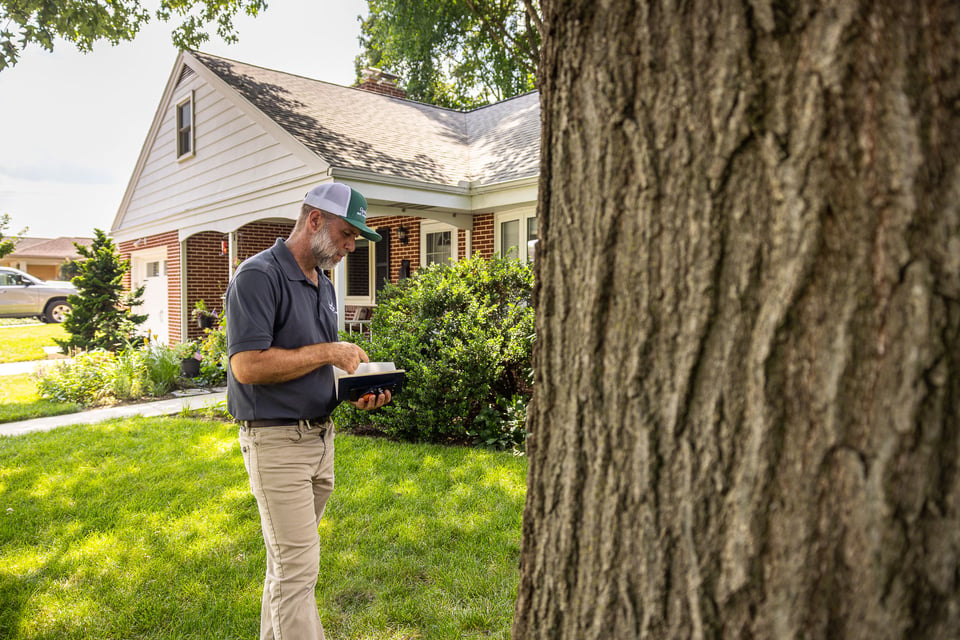
We strongly recommend bringing in a team of experts like our trained and certified arborists at Good’s to help you with this process.
Put your Tree Stump Needs in Good’s Hands
When it comes to stump removal, don’t go out on a limb. Instead, lean on a team of certified arborists to get the job done right - the first time around.
At Good's Tree and Lawn Care, we put safety first when grinding stumps. Our PA One Call Policy ensures that local laws are followed when doing any kind of underground work by having job sites surveyed and marked for any sub-grade public utilities like gas and electric. Gone unmarked, damaging one of these utilities can lead to service interruptions and serious injury, death, or property damage. It's important that the company you work with is aware of and follows these regulations for the safety of everyone involved.
With a safety-first approach and clear, honest communication every step of the way, our certified arborists at Good’s make the process simple, secure, and stress-free.
Ready to reclaim your South Central Pennsylvania yard? Get started with a free quote today.
Image Sources: carpenter ant, stump regrowth

.png?width=429&height=204&name=Goods%20Tree%20Care%20Logo%202%20(2).png)
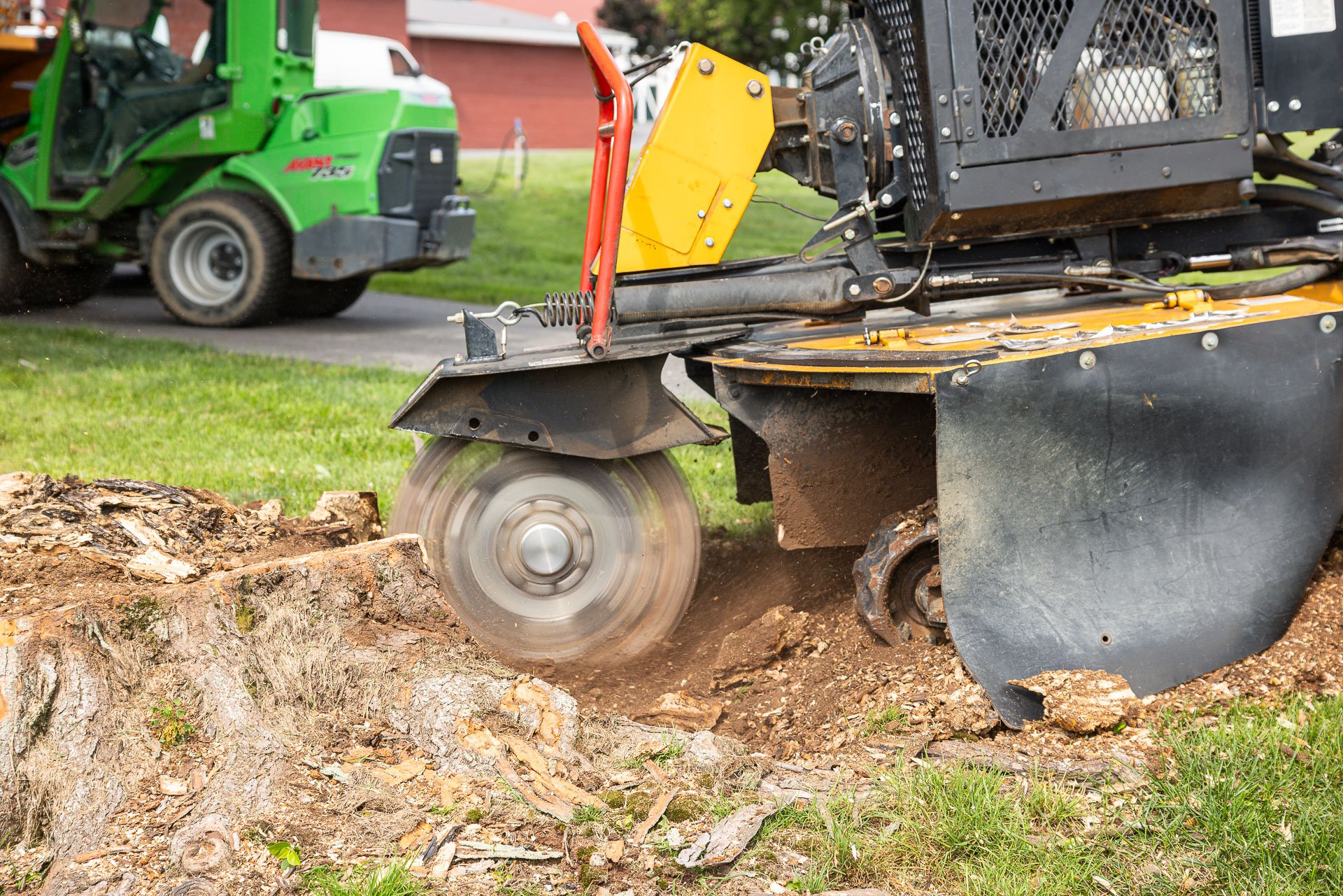





.png?width=300&height=143&name=Goods%20Tree%20Care%20Logo%202%20(2).png)